Blogs
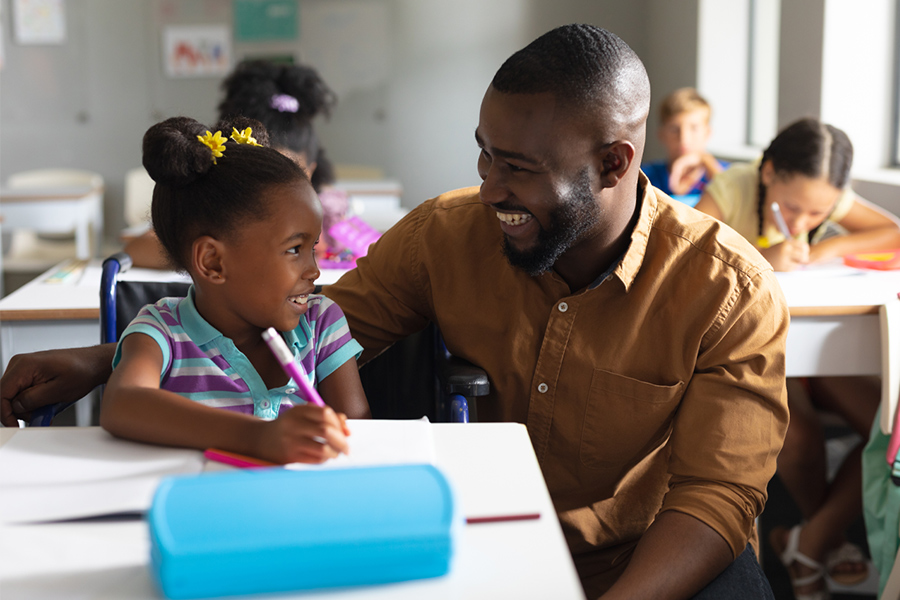
This article explores how districts can strengthen accountability by providing direct support for students, targeted coaching for teachers, and sustained leadership development. It explains how Greene Education partners with schools to build systems where expectations, instruction, and outcomes align.
Key takeaways:
-
Accountability improves when student, teacher, and leadership supports work together.
-
Coaching and professional learning create consistency that data alone cannot achieve.
-
Greene Education provides hands-on services that increase clarity, ownership, and results.
Intended audience: District leaders, principals, instructional coaches, and teacher leaders responsible for school improvement.
Introduction
Accountability is more than a metric. It is a shared commitment to ensuring every student experiences high quality instruction and receives the support they need to succeed. For many school and district leaders, the challenge is not a lack of dedication. It is finding the right systems and training that align expectations, instruction, and student outcomes.
Greene Education works alongside districts to strengthen accountability through direct student support, teacher coaching, and leadership development. Our team understands how difficult it is to raise performance in a sustainable way. With experience across diverse school systems, we help teams build the skills and structures needed to reach their goals.
Why Accountability Requires More Than Data
Most accountability systems focus on test scores, observation tools, and performance indicators. While these metrics matter, they will not improve without the right instructional supports behind them.
For accountability to work, schools need:
-
Clear expectations rooted in evidence based practice
-
Strong leadership capable of coaching and guiding teams
-
Teacher support that improves daily instruction
-
Targeted student interventions aligned to real needs
-
Consistent professional learning that reinforces expectations
When these pieces come together, accountability becomes a culture rather than a compliance task.
How Student Support Strengthens School Accountability
Student outcomes are the most direct indicator of a school’s success. But students cannot meet expectations without access to the right support systems.
Provide Targeted Academic Interventions
Districts should implement interventions that:
-
Use progress monitoring to identify student needs
-
Connect supports directly to grade level instruction
-
Include small group or one-on-one support
-
Are delivered consistently by trained educators
Greene Education partners with districts to implement these systems with clarity and purpose, ensuring interventions connect to instructional goals rather than operate in isolation.
Build Systems That Support the Whole Child
High accountability schools also consider factors like:
-
Positive behavior support
-
Attendance systems
-
Social emotional learning
-
Mentoring and advisory structures
When students experience well-rounded support, academic accountability strengthens naturally.
How Teacher Coaching Improves Instructional Accountability
Teacher performance is central to student success. Coaching creates a supportive environment where educators grow their practice and feel confident delivering high quality instruction.
Benefits of Ongoing Teacher Coaching
Effective coaching helps teachers:
-
Understand expectations for rigorous instruction
-
Use data to adjust practice
-
Implement High Quality Instructional Materials with fidelity
-
Strengthen classroom management
-
Improve lesson design and student engagement
At Greene Education, our coaches are former teachers and leaders who bring real classroom experience. This builds trust, increases buy-in, and accelerates skill development.
Actionable Tips for Districts
Districts can strengthen accountability by offering:
-
Regular classroom observations with actionable feedback
-
Collaborative planning sessions aligned to curriculum
-
Opportunities to model lessons, co-teach, and practice routines
-
Professional learning grounded in classroom realities
Explore how Greene Education supports this work on our Services page.
The Role of Leadership Coaching in School Accountability
Strong school leadership is one of the highest-leverage factors in student achievement. Leaders need continuous development, just like teachers and students.
What Effective Leadership Coaching Includes
Leadership coaching helps principals and instructional leaders:
-
Strengthen their instructional knowledge
-
Lead PLCs with purpose
-
Provide meaningful feedback to teachers
-
Align resources and priorities to student needs
-
Build a culture of shared responsibility
When leaders develop these skills, accountability improves across the entire system.
Experience and Proof From Greene Education
Schools supported by Greene Education report:
-
More consistent implementation of best practices
-
Improved teacher morale and confidence
-
Stronger alignment between expectations and instruction
-
Increased student engagement and learning outcomes
Our approach works because it is practical, relationship centered, and grounded in real school experience.
Tips for Building a Culture of Accountability
Schools that consistently improve follow a predictable set of practices.
1. Set Clear, Shared Expectations
Teachers and leaders should understand exactly what high quality instruction looks like.
2. Ensure Professional Learning Aligns to Instruction
Training should focus on curriculum, data use, and evidence based practices.
3. Use Data Purposefully
Schools should review:
-
Student progress
-
Classroom practice
-
Intervention impact
-
PLC collaboration outcomes
4. Provide Coaching at Every Level
Students need support. Teachers need coaching. Leaders need development.
5. Celebrate Growth
Improvement accelerates when teams feel encouraged and recognized.
Key Takeaways
-
Accountability improves when student, teacher, and leadership supports align.
-
Coaching creates clarity and consistency that data alone cannot deliver.
-
Greene Education offers tailored services that strengthen instruction and leadership.
-
Direct student support helps districts close gaps and improve outcomes.
Frequently Asked Questions (FAQ)
What does school accountability really mean?
It refers to the systems, expectations, and supports that ensure students receive high quality instruction and make measurable progress.
How does leadership coaching affect accountability?
Strong leaders provide feedback, reinforce expectations, and create systems that drive continuous improvement.
Why is teacher coaching necessary?
Coaching builds teacher confidence, improves instructional practice, and ensures consistent implementation of school initiatives.
How does Greene Education support accountability work?
We offer leadership coaching, teacher support, student interventions, and professional development aligned to district priorities.
Conclusion
Sustainable accountability is built through aligned support at every level. When students receive targeted help, teachers receive meaningful coaching, and leaders develop strong instructional skills, schools create conditions where improvement becomes ongoing and achievable.
Greene Education is committed to partnering with districts to build this kind of culture. With practical strategies and hands-on support, we help school systems strengthen accountability and improve outcomes for every learner.
Call to Action
To learn how Greene Education can support your accountability and improvement goals, visit https://greeneeducation.com/ or call 601-863-8400

This article explains what High Quality Instructional Materials are, why they matter for school and district leaders, and how Greene Education supports successful implementation through professional learning and instructional coaching.
Key takeaways:
HQIM improves instructional consistency, equity, and student achievement.
Effective implementation requires aligned training, coaching, and leadership support.
Greene Education provides the ongoing professional learning districts need to bring HQIM to life.
Intended audience: District leaders, principals, instructional coaches, and educator leadership teams.
Introduction
School districts invest significant time, funding, and energy in curriculum decisions. Yet one of the most common challenges leaders share is that even the best curriculum does not guarantee high quality instruction. This is why High Quality Instructional Materials, or HQIM, have become an essential foundation for districts committed to instructional excellence and equitable learning.
At Greene Education, we partner with districts to ensure educators feel confident using their instructional materials with clarity, fidelity, and purpose. With years of experience supporting school systems of all sizes, our team understands that HQIM is not just about selecting strong materials. It is about implementing them with skill, support, and aligned professional learning.
What Are High Quality Instructional Materials?
High Quality Instructional Materials are standards-aligned, evidence-based resources that support rigorous teaching and deeper learning. These materials:
Provide clear learning progressions and high expectations
Include culturally responsive content
Support differentiation and accessibility
Align with state standards and research-based instructional practices
Offer assessments embedded throughout instruction
When implemented intentionally, HQIM help teachers focus more on instruction and less on creating materials from scratch. They also provide a shared foundation for professional learning communities, data-driven instruction, and equitable learning experiences across classrooms.
Why HQIM Matter for District Success
Strong materials matter, but research shows that teacher support matters even more. Without clear training or coaching aligned to HQIM, implementation often becomes inconsistent, fragmented, or overwhelming.
High Quality Instructional Materials support districts by:
Creating instructional coherence across grade levels and schools
Strengthening teacher content knowledge and pedagogy
Reducing variability in instruction
Allowing teachers to spend more time planning for student needs
Improving student engagement and achievement
District leaders frequently report that HQIM accelerate improvement only when paired with aligned professional learning and leadership support. That is where our work at Greene Education becomes integral.
Greene Education’s Experience Supporting HQIM Implementation
Greene Education has spent years helping districts move from curriculum adoption to true instructional transformation. Through hands-on coaching, leadership development, and high-impact training, we help schools unlock the full value of their materials.
Our approach emphasizes:
Job-embedded coaching that supports teachers in real classrooms
Leadership development to help principals and instructional leaders guide implementation
Professional learning that builds confidence using new materials
Collaborative planning that equips teams to adapt HQIM for diverse learners
Data-driven support aligned to district goals and instructional priorities
Districts trust Greene Education because our specialists are former teachers, coaches, and leaders who have implemented HQIM firsthand. We know what works, what gets in the way, and what teams need to thrive.
How Districts Can Successfully Implement HQIM
Selecting strong materials is the starting point. The real transformation happens when teachers and leaders receive the guidance needed to implement them effectively.
1. Provide Training Aligned to the Curriculum
Teachers benefit from targeted learning that:
Demonstrates how lessons are structured
Models instructional routines
Builds understanding of content progressions
Clarifies what success looks like for students
2. Support Leaders in Observing HQIM in Action
When principals and coaches understand HQIM deeply, they can:
Provide actionable feedback
Reinforce aligned instructional practices
Identify gaps in implementation
Celebrate teacher strengths
3. Build Collaborative Planning Routines
Effective collaborative planning focuses on:
Anticipating student misunderstandings
Identifying priority learning goals
Reviewing embedded assessments
Aligning supports to student needs
4. Offer Ongoing, Job-Embedded Coaching
Coaching ensures that the investment in HQIM yields results. Greene Education provides instructional coaching that includes:
Lesson modeling
Co-teaching
Observation and feedback
Data review
Goal setting with teachers and teams
5. Review Implementation Progress Regularly
Districts see the greatest success when they use data to:
Monitor curriculum fidelity
Identify professional learning needs
Adjust pacing or supports
Ensure materials work for all learners
To learn how we support districts with HQIM coaching and professional development, explore our Services page.
Proof and Experience: Success in Real Districts
Our team has supported districts during initial adoption, multi-year implementation, and full-scale instructional redesign. Districts consistently share outcomes such as:
Improved instructional consistency
Stronger Professional Learning Community (PLC) collaboration
Higher teacher confidence using materials
Clearer expectations for rigorous instruction
More meaningful student engagement
Because our specialists have implemented HQIM in their own schools, we understand the challenges educators face and the support structures that make adoption successful.
Key Takeaways
HQIM provide a powerful foundation for instructional quality.
Materials only make an impact when educators receive training and coaching.
Leadership involvement is essential for long-term success.
Greene Education supports districts with proven training, coaching, and leadership development aligned to HQIM.
Frequently Asked Questions (FAQ)
What qualifies as High Quality Instructional Materials?
HQIM are evidence based, standards aligned, and designed to support rigorous instruction that meets diverse student needs.
Do teachers still have flexibility when using HQIM?
Yes. HQIM provide a consistent foundation, but teachers adapt pacing, scaffolds, and supports based on student data and classroom context.
How long does it take to implement HQIM effectively?
Most districts see meaningful progress within the first year when supported by training and coaching.
How does Greene Education support HQIM implementation?
We offer professional learning, job embedded coaching, leadership training, and ongoing support tailored to each district’s curriculum and goals.
Conclusion
High Quality Instructional Materials are an essential investment for school systems that want to improve instructional quality and student outcomes. But materials alone do not improve teaching. The combination of strong curriculum, aligned training, and hands-on support is what creates lasting instructional change.
Greene Education is committed to helping districts bring HQIM to life in ways that empower teachers, strengthen leadership, and ultimately benefit students.
Call to Action
To learn how Greene Education can support your district with HQIM training, coaching, and leadership development, visit https://greeneeducation.com/ or call (601) 863-8400.

For K–12 teachers in Mississippi, continuous professional learning enhances instructional practice and enriches classroom experiences. Well-designed teacher development courses deepen student engagement, improve outcomes, and align with Mississippi’s academic standards while offering flexibility, affordability, and proven results. Greene Education partners with educators and districts to deliver research-based programs that translate theory into measurable classroom growth, fostering collaboration, relevance, and lasting improvement across schools.
The Role of Continuous Professional Development in Strengthening Classroom Outcomes
Ongoing professional learning empowers Mississippi teachers to refine instruction, deepen student engagement, and meet evolving academic standards. Through well-designed courses, educators gain practical tools to apply research-based strategies, integrate new technologies, and address diverse learning needs. Continuous development advances individual growth and builds stronger classrooms, fosters critical thinking, and promotes consistent, high-quality instruction across schools and districts.
Elements of Successful Teacher Development Courses
Effective teacher development courses combine research-based methods with practical application, giving educators the tools to strengthen instruction and inspire student achievement. When aligned with Mississippi’s state standards, these programs support district goals and contribute to measurable improvements in classroom performance. By balancing theory with real-world practice and offering flexible, relevant learning experiences, they encourage active participation and lasting professional growth that translates into stronger student outcomes.
Practical Strategies for Classroom Success
Teacher development courses equip Mississippi educators with practical, research-based strategies that enhance instruction, boost engagement, and improve results. By focusing on differentiated instruction, technology integration, and frameworks that support college and career readiness, these programs help teachers create inclusive, dynamic classrooms. Each course aligns with Mississippi’s standards, ensuring that professional learning translates into stronger student performance and real-world skill development.
Flexible and Accredited Learning Opportunities for Mississippi Educators
For Mississippi teachers, balancing professional growth with the demands of daily classroom life requires accessible and adaptable learning opportunities. Teacher development courses that offer flexible formats—such as online learning, hybrid sessions, or self-paced study—allow educators to pursue advancement without disrupting their teaching responsibilities. This flexibility ensures that professional learning fits naturally within a teacher’s schedule, making growth both attainable and sustainable throughout the year.
Accredited programs carry additional value by ensuring coursework meets recognized standards for quality and relevance. For Mississippi educators, this means every completed course contributes meaningfully toward recertification, career advancement, and alignment with state expectations. Accreditation also provides assurance that the training is backed by research-based methods and approved by the Mississippi Department of Education, giving teachers and districts confidence in its effectiveness.
Choosing the Right teacher development courses in Mississippi
Selecting professional learning programs that truly enhance teaching outcomes requires thoughtful consideration. For Mississippi educators and district leaders, the most effective teacher development courses combine quality, relevance, and measurable impact. Programs should balance affordability with substance—offering meaningful content and practical applications without exceeding district budgets or teachers’ personal resources.
Alignment with district priorities and Mississippi’s educational standards ensures professional learning efforts translate directly into classroom improvement. When courses support district goals—such as improving literacy rates, fostering student engagement, or advancing college and career readiness—they create a cohesive path toward statewide academic progress.
Equally valuable are programs grounded in research-based methods. Professional learning built on proven frameworks helps educators implement strategies that enhance instruction, strengthen student outcomes, and encourage reflective teaching practices. Courses that share documented success stories or performance data give administrators and teachers assurance that their investment will produce visible results.
Evaluating Program Effectiveness
Assessing the success of professional development initiatives requires focusing on data-driven improvements and measurable outcomes. Schools and districts can monitor changes in student performance, classroom engagement, and teacher satisfaction to evaluate the impact of these courses. Regular feedback from participants also offers valuable insights into the program’s strengths and areas for improvement.
Aligning with the Mississippi Department of Education Guidelines
Programs that adhere to state educational standards ensure that professional development aligns with district and state objectives. By following these guidelines, teacher development courses help educators meet the expectations set by the Mississippi Department of Education, promoting consistency and excellence in teaching practices across the state.
Greene Education: Your Partner in Professional Learning
Greene Education is a trusted partner in professional learning, offering a variety of teacher development courses tailored to the needs of Mississippi educators. With a focus on evidence-based strategies, flexible learning options, and alignment with state standards, Greene Education empowers teachers to elevate their practice and improve student outcomes.
The benefits of partnering with Greene Education include access to experienced instructors, comprehensive support, and a commitment to fostering long-term educational success. Mississippi educators are encouraged to explore Greene Education’s offerings to discover how these programs can enhance their professional journey.
Elevate Teaching, Strengthen Student Success
Selecting teacher development courses that foster both instructional growth and measurable classroom improvement creates lasting value for Mississippi educators and districts alike. The most effective programs blend relevance, flexibility, and accreditation—enabling teachers to refine their craft, meet state standards, and inspire higher levels of student engagement.
Greene Education partners with educators and school leaders to turn professional learning into tangible results. Through research-based coursework, experienced instructors, and programs aligned with Mississippi’s educational goals, Greene Education equips teachers with strategies that make a tangible difference in classroom performance.
Educators and administrators seeking to strengthen teaching quality across their schools are encouraged to explore Greene Education’s professional learning opportunities. To learn more, visit us online or call 601-863-8400.
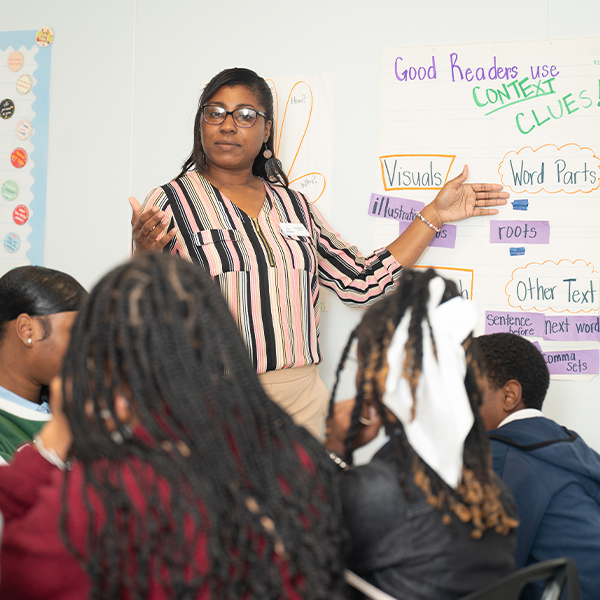
Mississippi’s school and district administrators face distinct challenges in improving student achievement and teacher performance. Educational consultant services offer targeted solutions for issues like low test scores and high teacher turnover. Greene Education, with its tailored, data-driven strategies, is a partner in enhancing teaching quality and leadership capacity. Examine how these services can lead to measurable improvements in student outcomes, and learn why Greene Education is a trusted ally in educational excellence.
The Role of Educational Consultant Services
Educational consultant services are pivotal for advancing school systems, especially in tackling challenges like low test scores and high teacher turnover in Mississippi. These consultants offer specialized expertise and strategic guidance, helping schools pinpoint the root causes of their issues and implement effective solutions.
Consultants collaborate with school and district administrators to thoroughly assess current practices. This involves analyzing student performance data, evaluating teaching methods, and reviewing school policies to identify areas needing improvement. They might recommend curriculum changes, new teaching technologies, or teacher mentoring programs to enhance instructional quality.
An external perspective from educational consultants can reveal inefficiencies and growth opportunities that insiders might overlook. Their insights help school leaders make informed decisions to boost student achievement and teacher effectiveness.
Primary Benefits of Partnering with Educational Consultants
Educational consultants can be game-changers for schools aiming to elevate teaching and leadership. A significant benefit is their ability to tailor strategies that directly address a school’s unique challenges. By collaborating with school leaders, consultants craft plans that tackle specific issues and build on existing strengths, leading to tangible improvements in student performance.
Consultants also enhance leadership by offering targeted professional development. They equip school and district leaders with the necessary skills in areas like strategic planning and conflict resolution, which are critical for fostering a positive educational environment.
Another advantage is their expertise in implementing evidence-based practices. Consultants introduce innovative teaching methods and technologies that can transform classroom experiences. These methods help boost both teacher effectiveness and student engagement.
Navigating the complexities of educational policies and funding is another area where consultants provide invaluable support. Their guidance helps schools optimize resources and comply with regulations, ensuring efficient operations that are both worthwhile and fiscally responsible.
Ultimately, partnering with educational consultants empowers schools to make lasting, impactful changes. By focusing on data-driven solutions, schools can significantly enhance teaching quality, leadership capacity, and student success.
How Educational Consultants Enhance Teaching and Learning
Educational consultants are instrumental in boosting teaching quality and student engagement. They collaborate with educators to craft innovative teaching strategies that address the unique needs of each school or district. By integrating modern teaching methods and technology, consultants help teachers connect with students more effectively, leading to better learning outcomes.
A significant part of this process is professional development. Consultants organize training sessions that equip teachers with up-to-date instructional techniques and classroom management skills. These sessions often cover areas like differentiated instruction and formative assessments, using data to refine teaching practices. Investing in teacher development creates a dynamic learning environment that fosters student success.
Strengthening Leadership and Professional Learning Systems
Enhancing leadership capacity is requisite for ongoing school improvement. Educational consultants provide strategic guidance and mentorship to school leaders, helping them build a culture of continuous growth and shared leadership. This empowers teachers to take initiative and contribute to school improvement efforts.
Consultants also help establish effective professional learning systems. They work with districts to create structures like professional learning communities and peer coaching programs, which encourage collaboration and knowledge sharing among educators. These systems support a culture of innovation and growth.
Choosing the Right Educational Consultant Services
Choosing the right educational consultant is necessary for achieving your desired outcomes. Administrators should look for consultants familiar with Mississippi’s academic landscape, as local knowledge ensures relevant solutions are reached. Experience and a proven track record in similar settings are also required. Consultants should offer customized, data-driven strategies that align with the school’s specific goals.
Greene Education: Your Partner in Educational Excellence
Greene Education is a trusted partner in educational consulting, offering services tailored to the challenges faced by Mississippi schools. Their collaborative approach involves working closely with administrators to develop strategies that drive improvement.
Success stories from Greene Education demonstrate their impact, such as increasing test scores and reducing teacher turnover in struggling districts. These outcomes showcase their ability to deliver tangible results.
Let Greene Education Services Help Your School Thrive
Educational consultant services are advantageous for schools aiming to improve teaching quality, leadership effectiveness, and student outcomes. Partnering with experts like Greene Education Services enables administrators to implement strategic, data-driven solutions tailored to their challenges. For those looking to elevate their educational systems, Greene Education provides the expertise and support necessary for lasting success. To learn how we can help your school or district achieve its goals, contact us today at 601-863-8400 for customized consulting solutions.
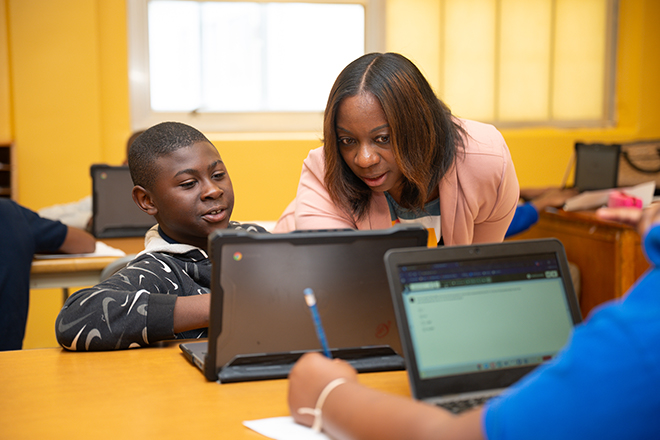
Culturally responsive leadership builds on the foundation of Geneva Gay’s seminal work, Culturally Responsive Teaching: Theory, Research, and Practice (2010). In her book, Geneva Gay emphasizes that culture is central to how all learning takes place. She argues that culturally responsive pedagogy is a student-centered approach that includes cultural references and recognizes the importance of students’ cultural backgrounds and experiences in all aspects of learning. This perspective is crucial for educational leaders aiming to foster inclusive and equitable learning environments.
Embedding Inclusive Practices in Daily Routines
To translate culturally responsive leadership into meaningful change, it’s essential to embed inclusive practices into daily school routines. Here are several strategies:
-
Foster Cultural Awareness Among Staff: Regular professional development sessions can help educators recognize and appreciate cultural differences, enabling them to adapt their teaching methods accordingly.
-
Integrate Diverse Perspectives into the Curriculum: Ensure that the curriculum reflects a variety of cultural viewpoints, allowing students to see themselves represented and to learn about others’ experiences.
-
Encourage Family and Community Engagement: Building strong relationships with families and communities can provide valuable insights into students’ cultural backgrounds and create a more supportive learning environment.
-
Implement Inclusive Policies and Practices: Review and revise school policies to ensure they are inclusive and do not inadvertently disadvantage any group of students.
-
Promote Reflective Leadership: School leaders should engage in self-reflection to understand their own cultural biases and how these may impact their leadership practices.
By embedding these practices into daily routines, educational leaders can create a more inclusive and responsive learning environment that acknowledges and values the diverse cultural backgrounds of all students.
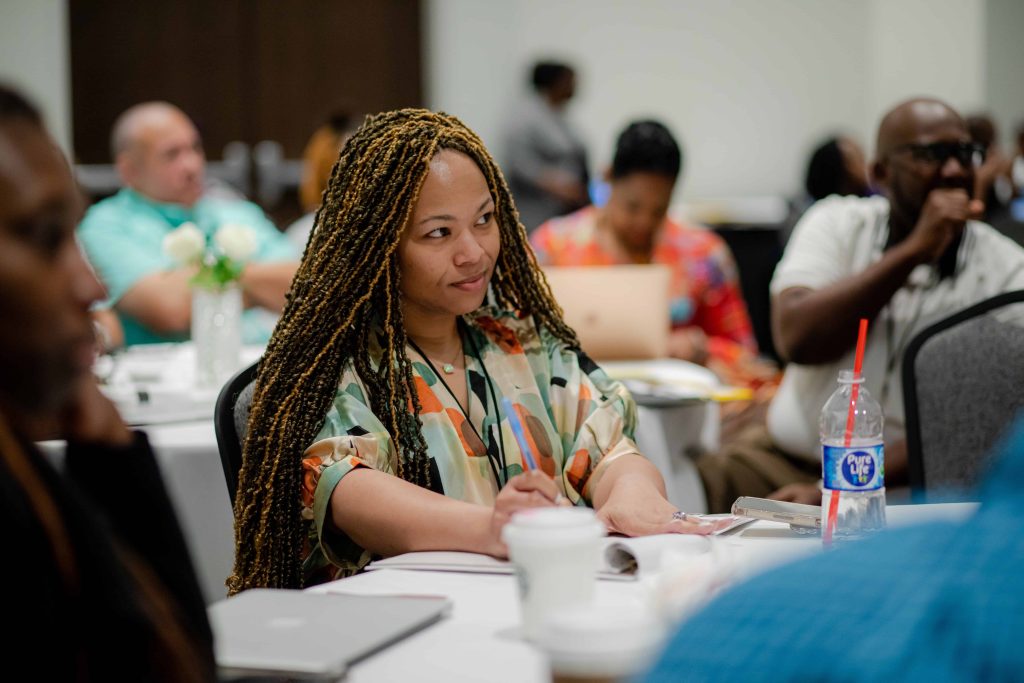
In the journey of learning, it’s easy to think that success is a permanent destination and failure is the end of the road. But as Winston Churchill famously said, “Success is not final, failure is not fatal: It is the courage to continue that counts.” Nowhere is this more true than in the world of academics. The way students interpret and respond to success and failure—their mindset—can make all the difference in their long-term achievement.
The Power of Mindset in Learning
Research in educational psychology highlights the critical role of mindset in academic performance. Carol Dweck, a leading researcher in this field, distinguishes between two types of mindsets: fixed and growth. Students with a fixed mindset believe their intelligence is static. They see success as proof of inherent ability and failure as a reflection of personal inadequacy. On the other hand, those with a growth mindset view intelligence as malleable. They see success as a result of effort and strategy, and failure as an opportunity to learn and improve.
A growth mindset encourages resilience. When students understand that a single setback doesn’t define their capabilities, they are more willing to take on challenges, seek feedback, and persist through difficulty. Conversely, a fixed mindset can cause students to avoid challenges and give up when things get tough, limiting their potential.
Success Is a Stepping Stone, Not a Destination
One of the most common misconceptions in education is that success is a permanent marker of ability. A high score on an exam or recognition for a project can boost confidence, but it doesn’t guarantee future performance. Students who understand this are less likely to become complacent. They continue to seek improvement, practice skills, and push their boundaries. This perspective fosters continuous growth, which is essential in an academic landscape where learning is cumulative.
Failure as a Teacher, Not a Threat
Failure is often stigmatized in schools. Yet, reframing failure as a natural and instructive part of the learning process can transform academic achievement. Mistakes reveal gaps in understanding, highlight areas for improvement, and build problem-solving skills. Students who approach failure with curiosity rather than fear are more likely to experiment, innovate, and persist in the face of difficult material.
Consider the student who struggles with calculus. Instead of seeing a poor test score as proof of inability, they view it as a signal to adjust their study strategies, seek help from a tutor, or practice different problem types. Over time, these repeated adjustments strengthen their understanding and boost performance—a clear demonstration that failure is not fatal, but foundational.
Cultivating a Growth Mindset in Education
Teachers, parents, and mentors play a vital role in shaping students’ mindsets. Encouraging effort over innate ability, praising persistence, and modeling resilience can reinforce a growth-oriented approach. Similarly, helping students reflect on both successes and failures, asking questions like “What strategies worked?” and “What can I try differently next time?” promotes self-awareness and adaptive learning behaviors.
Additionally, integrating goal-setting and reflection into academic routines can help students recognize that achievement is a journey rather than a final destination. Celebrating progress, however incremental, reinforces the idea that success is built on ongoing effort, and setbacks are simply part of the path.
Conclusion
Success and failure are not permanent verdicts—they are part of an ongoing process. A student’s mindset determines whether these experiences become stepping stones or stumbling blocks. By embracing a growth mindset, learners can transform challenges into opportunities, view failure as informative rather than threatening, and approach success as a motivation to continue learning. Academic achievement, then, is not just about talent or intelligence; it’s about resilience, adaptability, and the courage to keep moving forward.
At Greene Education, we believe every student has the potential to thrive when mindset and effort align. Remember: your next success is not the end, and your next failure is not the end either—they are simply part of your learning story.
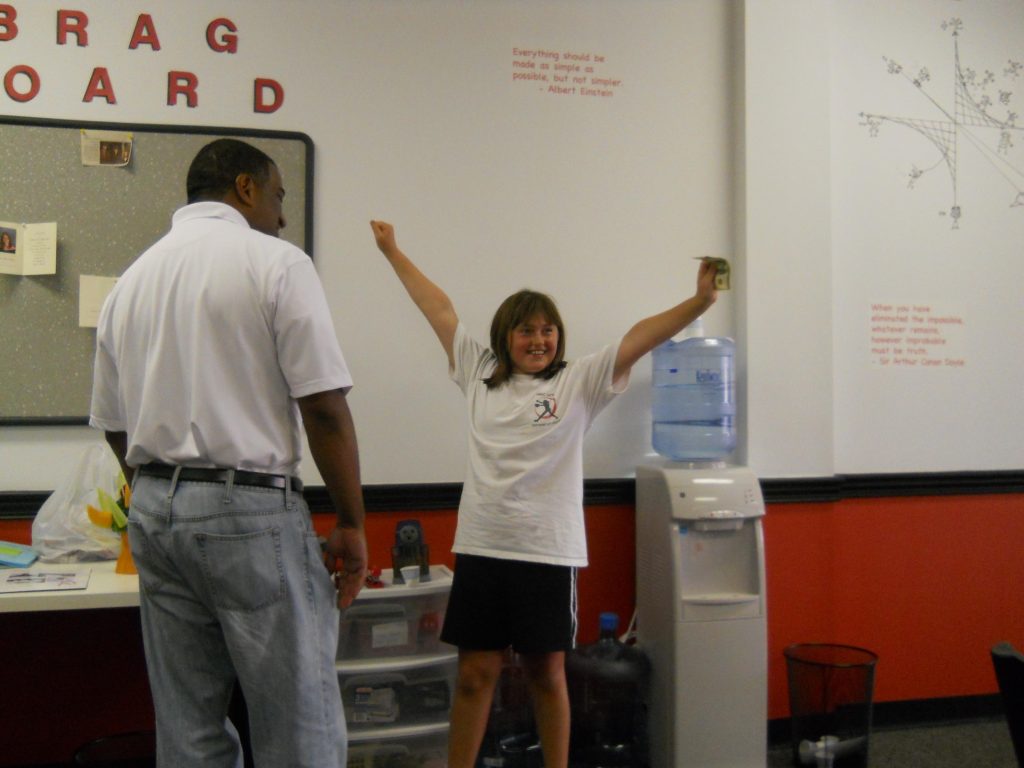
Goal setting isn’t just a tool for athletes or professionals — it’s a powerful strategy that can dramatically enhance student performance. By setting clear, specific, and challenging goals, students can increase motivation, focus, and achievement across all areas of learning.
Why Goals Matter
When students set goals, they create a roadmap for success. Goals provide direction and a sense of purpose, helping students prioritize tasks and manage their time effectively. Instead of wandering aimlessly through assignments, students can focus on what truly matters, boosting productivity and reducing procrastination.
Research by Locke and Latham (2002) shows that goal setting has a strong, positive effect on performance. Their work highlights that specific and challenging goals lead to higher levels of achievement compared to vague or easy targets. By applying these principles in the classroom, educators can guide students toward measurable and meaningful outcomes. Read the study here.
The Mechanisms Behind Goal Success
-
Increased Motivation: Goals act as a motivational force. Students are more likely to put in consistent effort when they know exactly what they are working toward.
-
Enhanced Focus: Clear goals help students identify priorities, reducing distractions and channeling energy into meaningful tasks.
-
Feedback and Adjustment: Goals make it easier to monitor progress. Students can assess where they are and adjust their strategies to stay on track.
-
Sense of Achievement: Completing a goal provides a tangible sense of accomplishment, reinforcing positive behavior and encouraging further effort.
Practical Tips for Students
-
Set SMART Goals: Specific, Measurable, Achievable, Relevant, and Time-bound goals are the most effective.
-
Break Big Goals Into Steps: Large projects or long-term goals can feel overwhelming. Breaking them into smaller, manageable tasks makes success more attainable.
-
Track Progress: Keep a journal or use apps to monitor achievements and setbacks.
-
Celebrate Wins: Recognizing accomplishments, even small ones, can boost motivation and reinforce positive habits.
Conclusion
Goal setting is more than just writing a list of things to do — it’s a strategy grounded in research that can transform how students approach learning. By setting clear, challenging goals and regularly tracking progress, students can improve focus, increase motivation, and achieve higher academic performance. Teachers and parents can support this process by helping students define meaningful goals and providing consistent feedback along the way.
For a deeper dive into the research behind goal setting and performance, see Locke & Latham (2002): Goal Setting and Task Performance.

Greene Education Services (GES), a leading U.S.-based education consulting firm, recently unveiled a comprehensive rebrand and redesigned website to better reflect its mission, values, and service sophistication. Founded by Windell Greene, GES has grown since 2008 from supporting schools with math consultancy into a powerhouse offering multi-disciplinary coaching and professional learning across the country.
Why Rebrand Now?
After years of steady expansion—serving over 80 school districts and employing 50+ consultants in a variety of academic and leadership fields—GES recognized the opportunity to upgrade its identity to match its elevated scope and impact. The rebranding reflects three central pillars of the Greene Way: Learning‑Focused, Reflection-Centered, and Analytics‑Driven. These core values inform every institutional touchpoint and find new visual expression in the refreshed branding.
Visual Identity & Design: Fresh, Trustworthy, Elegant
The new visual identity centers around a crisp and modern logo marked by green and navy-blue tones—colors that symbolize growth, integrity, and stability. The subtle integration of an academic motif—such as an abstract tree sprouting from a book—communicates growth fueled by learning. The updated typeface, chosen for clarity and professionalism, ensures consistency across print and digital media.
This brand refresh is consistently implemented in new marketing brochures, course guides, and communications templates—ensuring cohesion across all client-facing materials. The result? A refined, professional aesthetic that attracts attention without compromising approachability.
Website Relaunch: Navigation, Engagement, Clarity
The redesigned GreeneEducation.com features a sleek and intuitive structure. Key improvements include:
- Clear Service Navigation – With distinct sections for Services, Professional Learning, and Institutes, stakeholders can quickly find relevant offerings such as Leadership Institutes, Mathematics Institutes, Writing Institutes, and New Teacher Institute programs.
- Rich Content & Testimonials – Success stories—such as schools improving math proficiency by over 60 points—are prominently displayed, boosting credibility and demonstrating quantifiable impact.
- Call‑to‑Action Focus – Throughout the user journey, prominent invites encourage site visitors to schedule a meeting, register for events, and access consulting inquiries.
- Mobile‑First Design – The site’s responsive layout ensures seamless browsing across devices, showing Greene’s commitment to accessibility and ease of use.
Highlighting Greene’s Core Services
The updated website offers detailed insight into Greene Education’s core offerings:
- Customized Consulting – From teacher coaching to leadership development, Greene’s team delivers virtual or in-person support tailored to district needs.
- Professional Learning Programs – Robust institutes covering leadership, math, writing, and onboarding new teachers. Each program blends research-backed pedagogy with practical tools for immediate classroom application.
- Data & Instructional Strategy – Services include analyzing student performance data, curriculum alignment, and implementing SMART goals to meet state accountability metrics.
These offerings are framed by the Greene Way—a methodology that emphasizes curiosity, collaboration, and creativity as essential ingredients to learning success and social-emotional growth.
Outcomes & Feedback
The new brand and website are resonating with current and prospective partners. Administrator testimonials are featured proudly on the homepage:
“Our math department improved by more than 60 points, helping our school move from F to D… growth came from math.” — Assistant Principal, Carver Elementary
“Greene Education Services gave teachers and students exactly what they needed… Both schools are on track to be A schools.” — Director of Curriculum, Canton Public School District
These testimonials emphasize GES’s capacity to deliver measurable transformation in student achievement and teacher effectiveness.
Strategic Impacts of the Rebrand & Website
- Clearer Brand Storytelling – The refreshed identity tightly aligns visual elements and language with GES’s mission and values.
- Enhanced Positioning – Upgraded visuals and digital user experience reinforce GES as a trusted partner for educational transformation.
- Lead Generation & Engagement – Effective CTAs and clear service breakdowns drive inquiries and registrations.
- Greater Accessibility – Optimized for mobile and desktop use, the site ensures equitable access across platforms.
Final Thoughts
Greene Education Services’ rebrand and website relaunch mark a new chapter in a story built on results, innovation, and dedication to student and educator success. By modernizing the look and feel while elevating messaging and usability, Greene Education now communicates its impact with greater clarity and professionalism than ever before.
Whether you’re a school district leader seeking instructional support, a classroom teacher looking to grow, or an educational institution interested in data-driven consulting, the new Greene Education brand and website offer a welcoming gateway to exploring possibilities.
Explore their refreshed platform at GreeneEducation.com and see how their revitalized presence echoes the transformative work they work in classrooms and communities across the U.S.
